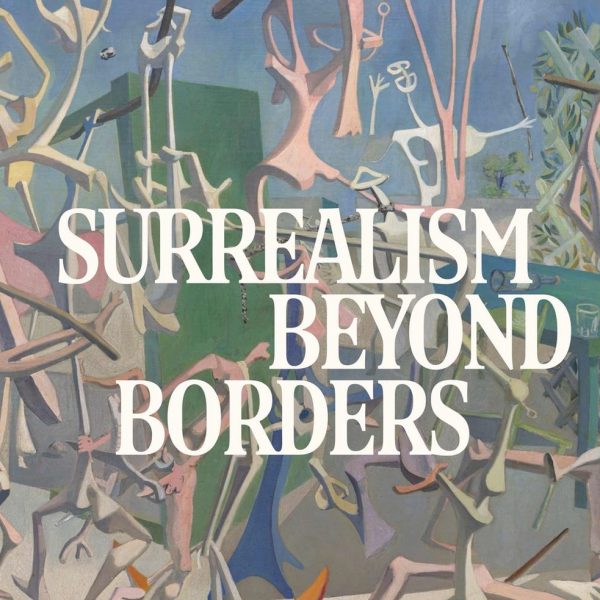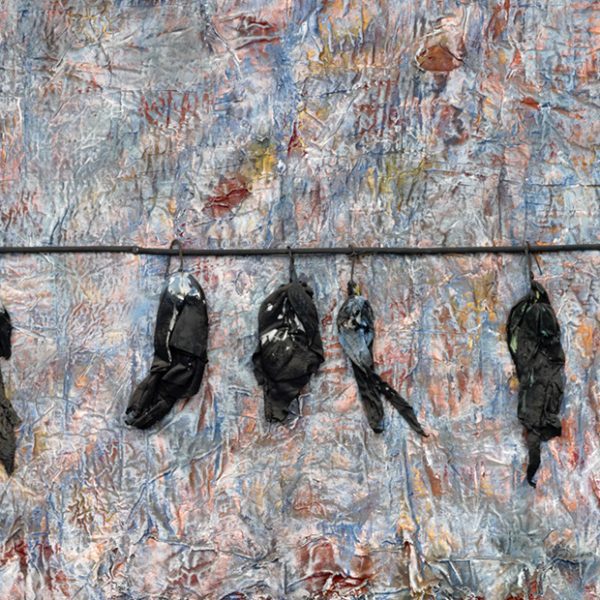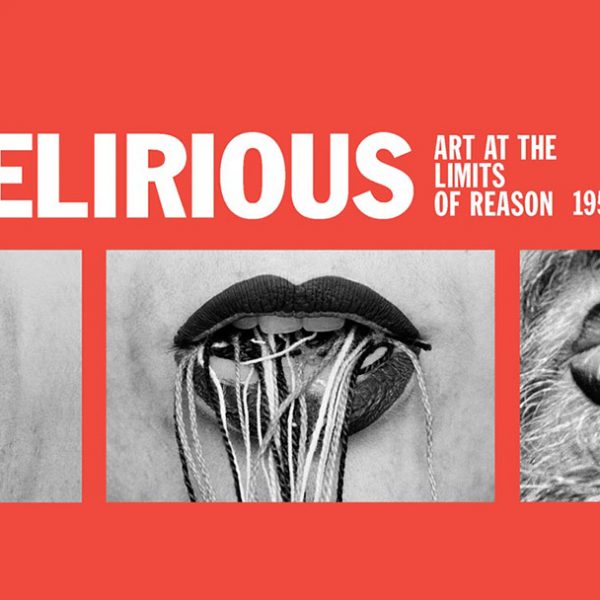Grand Design: Pieter Coecke van Aelst and Renaissance Tapestry—Interview with Author Elizabeth Cleland
In celebration of the publication of Grand Design, one of two excellent, brand new books from The Metropolitan Museum of Art (more on the other book to come…), we’re pleased to share a most illuminating interview from the Met’s blog, between the exhibition’s curator (and book’s editor), Elizabeth Cleland, and Rachel High, editorial assistant at the Met.
Rachel High, Editorial Assistant, The Metropolitan Museum of Art—

Grand Design: Pieter Coecke van Aelst and Renaissance Tapestry, by Elizabeth A. H. Cleland with Maryan W. Ainsworth, Stijn Alsteens and Nadine M. Orenstein, features 350 illustrations, and has been deemed “excellent” by Christoper Knight in the Los Angeles Times.
A tapestry designer, painter, draftsman, and publisher of architectural treatises, Pieter Coecke van Aelst was quite literally a Renaissance man. Though he was a master of many media while active from the 1520s until his death in 1550, his contributions have been largely forgotten today. Grand Design: Pieter Coecke van Aelst and Renaissance Tapestry, the catalogue accompanying the exhibition currently on view through January 11, 2015, covers much more than just the artist’s tapestries and aims to fill the nearly fifty-year gap in the literature on this great artist. I spoke with the catalogue’s author, Associate Curator Elizabeth A. H. Cleland, about the book, her interest in Coecke, and why she thinks this Northern Renaissance master has been neglected in recent scholarship.
Rachel High: Pieter Coecke van Aelst was a great Northern Renaissance tapestry designer but has not been adequately recognized. In fact, this is the first book dedicated to him since 1966. What originally interested you in Pieter Coecke van Aelst, and why did you decide to plan this book and exhibition around him?
Elizabeth Cleland: To our general audience he is one of the lost, great artists; I hope that anyone who looks through the catalogue or walks through the exhibition immediately realizes that. He’s a very compelling artist—the works are exquisitely beautiful—but above and beyond that, he’s also really important. Coecke’s contemporaries realized his importance, and for about two hundred years after his death people were still praising him and talking about him in texts, but since then he’s gone a little bit under the radar. He designed a lot more than just tapestries, but the tapestry series are the works that belonged to the great collectors of the period—the Medici, the Hapsburgs, Henry VIII, Francis I—they all owned tapestry series designed by Coecke. So, if you are interested in tapestry during the sixteenth century, he’s a natural subject of study.

Pride, from the Seven Deadly Sins tapestry series. Designed by Pieter Coecke van Aelst, ca. 1532–34. Tapestry woven under the direction of Willem de Pannemaker, Brussels, before 1544. Wool, silk, and silver- and silver-gilt-metal-wrapped threads; 15 ft. 3/8 in. x 25 ft. 5 1/2 in. (458 x 776 cm). City mark of Brabant-Brussels on bottom edge at left; weaver’s mark of Willem de Pannemaker on right selvage at bottom; inscribed in cartouche in upper border, “tvrgida ventosos imitata svperbia folles / pascitvr aerio corpvs inane noto.” Patrimonio Nacional, Palacio Real de La Granja de San Ildefonso (TA 22/1, 10004091). Mary of Hungary owned this copy of Pride from the Seven Deadly Sins tapestry series. Henry VIII also owned a version of this series, but all tapestries except for Avarice have since been lost.
Rachel High: In the catalogue’s opening essay, you mention briefly that Coecke’s mastery of several different media may have hindered his posthumous recognition, unlike Italian masters with similar proclivities such as Raphael and Leonardo Da Vinci. Could you discuss this further?
Elizabeth Cleland: Yes, I think it is fair to say that Coecke doesn’t conform to the established narrative of a great painter. Firstly, although there are an awful lot of paintings that survive with his name connected to them, a lot of them are actually workshop copies or works by followers in his circle, and that’s one reason why it was great to work with Maryan Ainsworth on the project—she traveled and looked at as many Coecke works as she could before whittling the list down to the seven paintings that we have in the show. There were a couple that were too fragile to travel, but even adding those, there are maybe ten works which can be directly attributed to him. Certainly in terms of traditional art-historical surveys which tend to prize painting, he’s not the most rewarding artist—at least, in quantity of works! I think that’s probably one of the reasons he is not adequately recognized. The other thing, of course, was that he was working just after Raphael and at the same time as Giulio Romano, and those Italian Renaissance artists have stolen the limelight.
Rachel High: Although Coecke kept a distinct regional style, his forms look rather Italianate. I think the way he depicts the human body is particularly unusual for a Northern Renaissance artist. Could you talk about Coecke’s travels around Europe and his influences from Italian Renaissance art?
Elizabeth Cleland: Any artist who was working in Flanders—Coecke’s workshop was in Antwerp, a great painting center—in the beginning of the sixteenth century would be aware of what was coming out of Italy. So Coecke would have been looking at prints. We argue in the catalogue and in the show that Coecke started very early in his career painting tapestry cartoons, and therefore had a lot of connections with the weavers working in Brussels. I’m absolutely convinced that he was looking at the cartoons that were arriving in Brussels from great Italian workshops like those of Raphael and Perino del Vaga. Coecke was already exposed to the art in the form of prints and cartoons, and then he went to Constantinople on a business venture in connection with some tapestry dealers to sell tapestries to Suleyman the Magnificent. If you think about the journey to get to Constantinople, he had to travel via the Italian peninsula. En route he was in Italy, and that’s when you see the Italian influence really blossom in his work. Coecke was already aware of Italian concepts of space and form, but it shows when he’s submerged in the culture.
My colleagues Maryan, Stijn Alsteens, Nadine Orenstein, and I all argue through our various different media that he probably even visited Giulio Romano in Mantua. Seeing artists like Giulio and his peers at work made him think about space in a whole new way. However, I think it is very important, and it’s something I really tried to push in the catalogue and in the show, that yes, Coecke was responding to Italy, but he was also part of this great tradition of Netherlandish artists such as Rogier van der Weyden, Jan van Eyck, Dieric Bouts, Hans Memling, and then, after him, Pieter Bruegel, who would go on to marry his daughter, and Peter Paul Rubens, who collected drawings by Coecke. You can see that Coecke is part of that Northern Renaissance tradition as well, so he’s really the best of both worlds.

Detail from Diomedes Fighting Igeus and Phlegeus. After designs by Giulio Romano, 1536–40. Fresco. Sala di Troia, Palazzo Te, Mantua

Pieter Coecke van Aelst (Netherlandish, 1502–1550). Resurrection, ca. 1530. Oil on panel; Triptych: central panel 28 1/2 x 22 in. (72.5 x 56 cm); wings each 28 x 9 1/4 in. (71 x 23.5 cm). Staatliche Kunsthalle Karlsruhe. The two images above show Giulio Romano’s design and Coecke’s work, respectively, and illustrate the exchange of ideas occurring between Italy and Flanders during the Renaissance.
Rachel High: What else have you learned about Coecke and his works while preparing this catalogue and exhibition?
Elizabeth Cleland: Well, he had a sense of humor! He used space very wittily, especially in the tapestries. All of Coecke’s works are wonderful, but the tapestries have this massive scale. The protagonists are life-size, and he plays with the notions of space and trompe l’oeil techniques. There’s one tapestry, Burning of the Booksfrom the Saint Paul series, and the bonfire is right up at the front of the picture plane, so it looks as though the books are about to topple into our space; they’re actually overlapping the border. Underneath there are some little putti figures who are playing, and one of them is pulling his friend, as if to say, “Watch out, those books are coming down!”

Saint Paul Directing the Burning of the Heathen Books from the Life of Saint Paul tapestry series. Designed by Pieter Coecke van Aelst, ca. 1529 or 1535. Tapestry probably woven under the direction of Jan van der Vyst, Brussels, probably before 1546. Wool and silk; 13 ft. 3. in. × 22 ft. 6⅛ in. (405 × 686 cm). Museum of Fine Arts, Boston (65.596). The putti that Elizabeth Cleland discusses can be found in the middle of the border in the above image.
Also, I think Coecke was a perfectionist, which is something Stijn discusses in the book in relation to the drawings. We have the petits patron for many of his works, which is the ultimate small drawing before the cartoon stage, but for some tapestries we have two or three petits patrons apparently all for the same work, with tiny changes. It’s really as if Coecke was such a perfectionist that he didn’t want to make a correction on hispatron. He wanted it just right.

Pieter Coecke van Aelst (Netherlandish, 1502–1550). A Horseman Abducting a Woman in a Landscape with a Battle, ca. 1530. Pen and brown ink, brown wash; squared for transfer in black chalk (laid down); 10 3/8 x 18 5/8 in. (26.5 × 47.3 cm). Watermark: none visible because of the secondary support at lower right, inscribed “J Con . . . et” in pen and brown-gray ink (eighteenth- or nineteenth-century handwriting). Hamburger Kunsthalle (23989). This drawing, though damaged, is an important early example of Coecke’s work and was likely enlarged for a cartoon, judging from the black chalk marks which indicate that it was transferred.
Another thing about Coecke is that he retained an active role in his projects and saw them through to a greater extent than any of his contemporaries. I think that’s what makes him such a great designer—after that initial design, he kept going back to the project. For example, for a stained glass window, he did the drawing, then we are ninety percent certain that he painted the cartoon, but after that he must have handed it over to the glaziers and the glassmakers. Coecke wouldn’t have created the stained glass in his workshop, and yet it is he and his journeymen who delivered the finished work to the church in Antwerp, so at some point the window came back into his hands before reaching its patron.
With a lot of the cartoons we see that he was changing, and in some instances even repainting them five or six years after he provided the initial cartoon. Coecke kept up a dialogue with the weavers, going back, correcting things, and changing things as needed. He must have been a workaholic! He was just forty-eight when he died, but he did so much, including the printing projects, which Nadine talks about in her entries. He had so much conviction and stamina to translate these handbooks of contemporary Italian architectural theory into Dutch and French (Coecke was polyglot as well), realizing there was a market for them. Then, he was daring enough to carry on publishing these translations even when the author, Serlio, asked him to stop because he had never given permission, but Coecke just carried on regardless. He just had such hutzpah.

Vertumnus Appears to Pomona in the Guise of a Herdsman from the Story of Vertumnus and Pomona tapestry series. Design attributed to Pieter Coecke van Aelst, ca. 1544. Tapestry woven under the direction of Willem de Pannemaker, Brussels, sometime between ca. 1548 and 1575. Wool, silk, and silver- and silver-gilt-metal-wrapped threads; 13 ft. 8 5/8 in. x 17 ft. 7 in. (418 x 536 cm). Weaver’s mark of Willem de Pannemaker on right selvage at bottom; inscribed in cartouche in upper border, “transit in agricolam.” Patrimonio Nacional, Madrid (TA 17/2, 10004061)
Rachel High: What is your favorite piece by Coecke included in the book?
Elizabeth Cleland: That’s an impossible question! It depends what mood I’m in. The first series, the Saint Paulseries, is so dynamic, it just sweeps you up—and he was only in his late twenties when he designed it. That’s really just in-your-face, daring, and innovative work. By the last decade, which we are representing in the show in the last gallery, there’s this beautiful, poetic tranquility which is completely different. You can recognize figure types and see it’s the same artist, but he’s traveled, he’s done the architectural projects, and he’s thinking about space in a different way. The Vertumnus and Pomona series from this period of his career, a love story about two minor deities, is really enchanting, but it completely depends on your frame of mind.

























